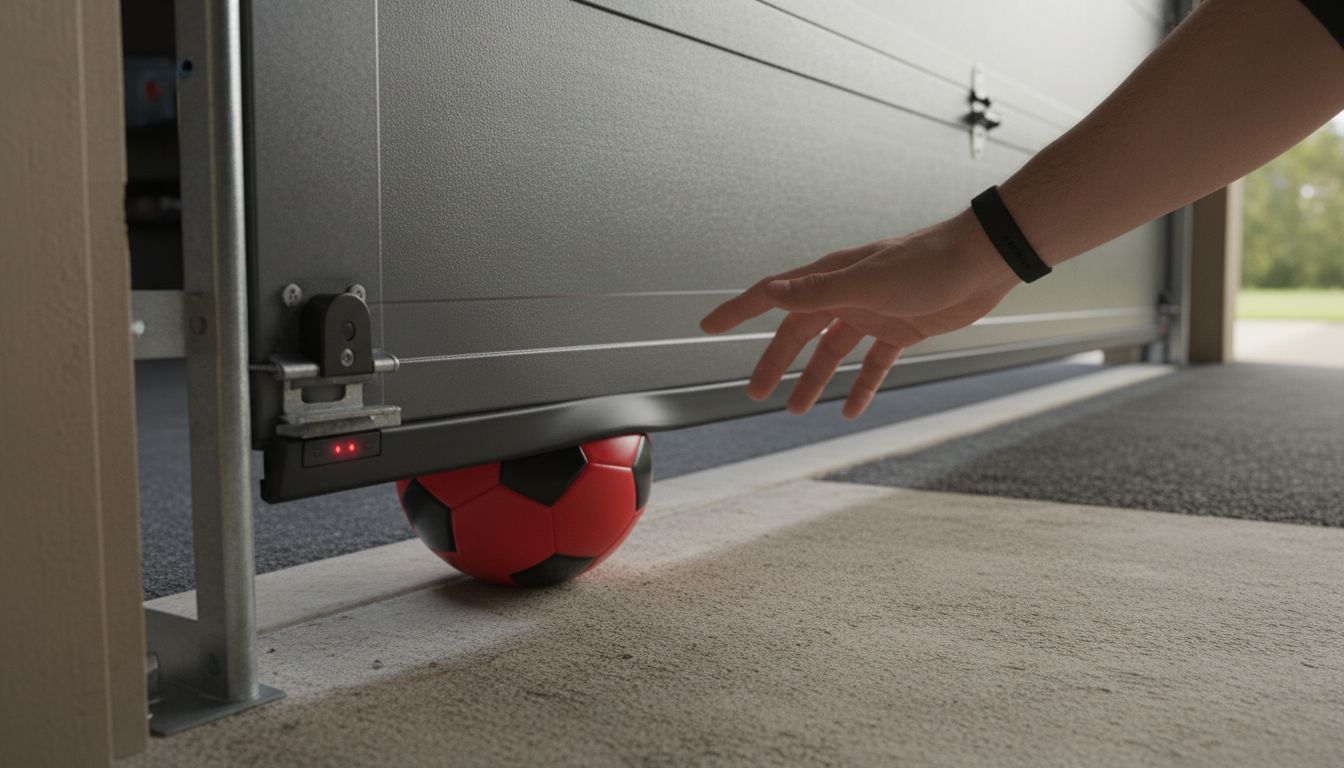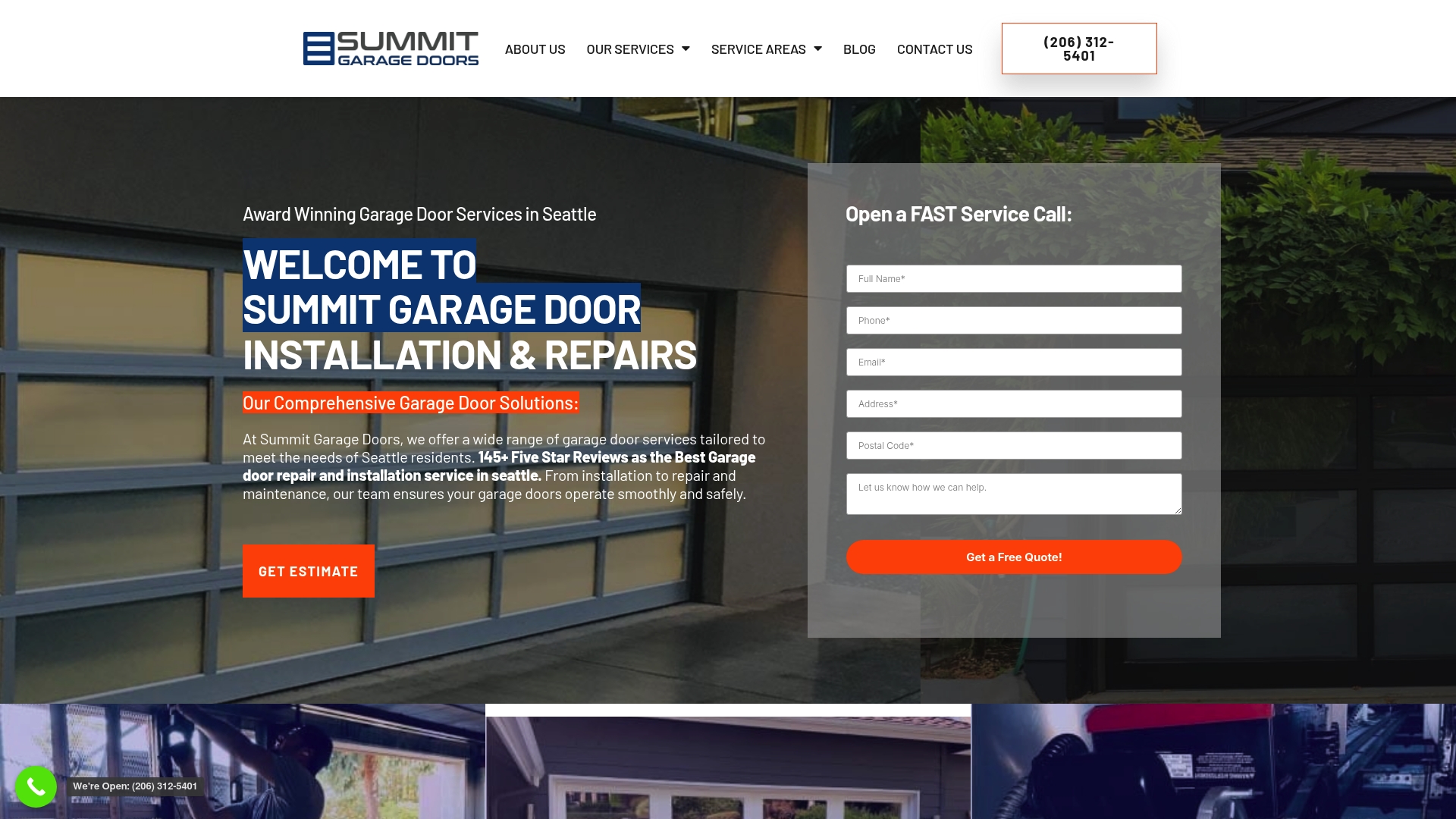Did you know that garage doors cause an estimated 20,000 injuries each year in the United States? Many of these accidents are preventable with the right knowledge about garage door opener safety. Having up-to-date safety features and understanding key mechanisms can protect your family from serious harm. Staying informed about safety protocols means turning a potential source of danger into a secure and dependable entry for your home.
Table of Contents
- Garage Door Opener Safety Fundamentals
- Types of Safety Mechanisms Explained
- Essential Safety Features and Technologies
- Seattle Area Codes and Legal Requirements
- Preventing Accidents and Common Mistakes
Key Takeaways
| Point | Details |
|---|---|
| Prioritize Safety Features | Install and regularly test garage door openers with automatic reversal mechanisms and safety certifications to prevent injuries. |
| Understand Local Regulations | Comply with Seattle codes, ensuring installations meet safety standards and are performed by certified professionals. |
| Conduct Regular Maintenance | Perform periodic safety inspections and tests to identify potential issues before they lead to accidents. |
| Educate Family on Safety | Implement protocols to keep children away from controls and educate all family members about garage door safety practices. |
Garage Door Opener Safety Fundamentals
Garage door openers are critical home infrastructure with serious safety implications. Understanding their fundamental safety mechanisms can prevent tragic accidents and protect your family. According to the Consumer Product Safety Commission, non-reversing garage door openers pose significant hazards, especially to children, as they can potentially lead to entrapment and fatalities.
Modern automatic reversing mechanisms are essential safety features that prevent crushing injuries. These systems use sensors to detect objects or people in the door’s path, automatically stopping and reversing the door’s direction if an obstruction is detected. Healthy Children recommends ensuring these reversing mechanisms are functioning correctly to minimize risks in areas where children might be present.
Key safety fundamentals for garage door openers include:
- Installing openers with current safety certifications
- Regularly testing automatic reversal systems
- Keeping remote controls away from children
- Performing annual professional safety inspections
- Immediately replacing outdated or malfunctioning opener systems
Visual safety indicators are also crucial. Most modern garage door openers include warning lights, audible alerts, and mechanical fail-safes designed to prevent unexpected movement. By understanding these fundamental safety principles, homeowners can transform their garage door from a potential hazard into a secure, reliable home entry point.
Types of Safety Mechanisms Explained
Garage door safety mechanisms are sophisticated systems designed to prevent accidents and protect users from potential injuries. ULSE highlights that automatic garage door operators are required to incorporate at least two critical entrapment protection mechanisms: an inherent reversal system and either an electric eye or edge sensor.
The primary safety mechanisms include:
- Electric Eye Sensors: These infrared sensors create an invisible beam across the garage door opening. When the beam is interrupted, the door immediately stops and reverses direction, preventing potential crushing injuries.
- Mechanical Pressure Sensors: These detect physical resistance when the door encounters an obstruction, triggering an automatic reversal.
- Edge Sensors: Installed along the door’s bottom edge, these sensitive strips detect any contact with objects or people, instantly stopping and reversing the door’s movement.
According to the Consumer Product Safety Commission, the Safety Improvement Act mandates that all residential garage door operators must provide a reversing system capable of stopping a downward-moving door within two seconds of contacting an obstruction. This regulation ensures a critical safety standard that protects homeowners from potential entrapment risks.
Beyond these primary mechanisms, modern garage door systems often include additional safety features such as:
- Visual warning lights
- Audible alert systems
- Manual emergency release handles
- Automatic stop-and-reverse technologies
By understanding and maintaining these safety mechanisms, homeowners can significantly reduce the risk of garage door-related accidents and ensure the protection of their family members and pets.

Here’s a comparison of primary garage door safety mechanisms and their functions:
![]()
| Safety Mechanism | How It Works | Key Benefit |
|---|---|---|
| Electric Eye Sensors | Infrared beam detects obstructions | Prevents crushing injuries |
| Mechanical Pressure Sensors | Senses resistance on contact | Triggers door reversal |
| Edge Sensors | Sensitive strip along door edge | Stops door on impact |
| Visual Warning Lights | Flashing lights signal movement | Alerts users before operation |
| Audible Alerts | Sound beeps during door movement | Warns nearby individuals |
Essential Safety Features and Technologies
Modern garage door systems have evolved to incorporate sophisticated safety technologies that protect homeowners and their families. Consumer Product Safety Commission regulations now require comprehensive safety features including automatic reversal mechanisms and advanced obstruction detection systems to minimize potential accidents.
Key essential safety technologies include:
- Infrared Motion Detection: Creates an invisible safety barrier that immediately stops door movement if an object is detected
- Force Limitation Sensors: Measure resistance during door operation, automatically reversing if unexpected pressure is encountered
- Rolling Code Technology: Prevents unauthorized remote access by generating new security codes with each door activation
- Battery Backup Systems: Ensures continued operation and safety features during power outages
According to the Consumer Product Safety Commission, a critical safety requirement is the inclusion of a manually operated emergency disconnect mechanism. This feature allows users to quickly detach the door opener in emergency situations, providing an additional layer of safety and user control.
Beyond technological safeguards, modern garage door systems also incorporate visual and audible safety indicators:
- Flashing warning lights before door movement
- Loud beeping alerts during door operation
- Clear visual indicators of system status
- Automatic stop mechanisms if unexpected resistance is detected
By integrating these advanced safety technologies, homeowners can significantly reduce the risk of accidents and create a more secure home environment.
Seattle Area Codes and Legal Requirements
Navigating the complex landscape of garage door safety regulations requires a thorough understanding of local and state requirements. Seattle Department of Construction and Inspections provides comprehensive access to building codes that specifically address garage door installation and safety standards for homeowners in the Greater Seattle area.
Key legal requirements for garage door installations in Seattle include:
- Mandatory safety sensor installations
- Compliance with automatic reversal mechanism standards
- Specific electrical and mechanical safety specifications
- Required professional certification for installations
- Annual safety inspection recommendations
Washington State Legislature outlines critical building code regulations in RCW 19.27, which establishes comprehensive construction standards for garage door systems. These regulations ensure that all garage door openers meet stringent safety criteria, protecting residents from potential mechanical failures and accidents.
For Seattle homeowners, compliance involves several critical steps:
- Obtaining necessary permits before installation
- Ensuring all equipment meets current state safety standards
- Having installations performed by certified professionals
- Maintaining documentation of professional installations
- Conducting regular safety assessments
By understanding and adhering to these local codes and legal requirements, homeowners can create a safer environment and avoid potential legal complications associated with non-compliant garage door systems.
Preventing Accidents and Common Mistakes
Garage door safety is a critical concern for homeowners, requiring vigilant attention and proactive prevention strategies. Understanding and avoiding common mistakes can significantly reduce the risk of serious accidents and potential injuries to family members and pets.
Washington State Automatic Safety Association recommends several key safety practices to prevent potential hazards:
- Child Safety Protocols: Keep remote controls out of children’s reach
- Control Placement: Mount wall controls at least five feet above the floor
- Visual Monitoring: Ensure the garage door remains in full view until completely opened or closed
- Regular Maintenance: Conduct periodic safety system inspections
Common critical mistakes homeowners frequently make include:
- Ignoring unusual sounds or irregular door movements
- Failing to test safety reversal mechanisms regularly
- Allowing children to operate or play near garage doors
- Neglecting professional annual safety inspections
- Using damaged or outdated garage door opener systems
Preventative maintenance involves more than just occasional checks. Homeowners should develop a comprehensive safety routine that includes:
- Monthly visual and operational safety tests
- Immediate repair of any detected mechanical issues
- Educating family members about garage door safety protocols
- Keeping area around door tracks clear of objects
- Replacing worn components before they fail
By implementing these strategies, Seattle homeowners can create a safer environment and significantly reduce the likelihood of garage door-related accidents.
Ensure Your Garage Door Safety with Trusted Local Experts
Understanding key safety features like automatic reversal mechanisms and electric eye sensors is crucial to protecting your family and home. If you have concerns about outdated or malfunctioning garage door openers, or if you want to upgrade to the latest safety technologies, don’t wait until an accident happens. Summit Garage Doors specializes in professional garage door installation and repair across the Greater Seattle area and can help make your garage safer today.

Experience peace of mind knowing your garage doors meet all modern safety standards. Our expert technicians perform thorough safety inspections, install advanced sensors, and provide reliable repairs tailored to your needs. Visit Summit Garage Doors now to schedule your service or learn more about how we protect you and your loved ones. Take action today and prevent costly mistakes before they become emergencies.
Frequently Asked Questions
What are the main safety features in modern garage door openers?
Modern garage door openers incorporate several key safety features, including automatic reversal mechanisms, electric eye sensors, mechanical pressure sensors, edge sensors, and visual/audible alerts. These features work together to prevent accidents and protect users from injuries.
How can I test the automatic reversal system of my garage door opener?
To test the automatic reversal system, place a small object like a piece of wood or a roll of paper towel in the door’s path. Close the door; it should stop and reverse immediately upon hitting the obstruction. Regularly testing this feature ensures it functions correctly and helps prevent accidents.
What common mistakes should I avoid to maintain garage door safety?
Common mistakes include ignoring unusual sounds, failing to test safety mechanisms regularly, allowing children to operate the garage door, neglecting professional inspections, and using outdated or damaged garage door openers. Addressing these issues can significantly reduce the risk of accidents.
Why is it important to have professional safety inspections for garage door systems?
Professional safety inspections are crucial as they ensure all garage door mechanisms are functioning properly, comply with safety standards, and identify any potential issues before they become serious hazards. Annual inspections are recommended to maintain a safe environment for your family.
Recommended
- Understanding Garage Door Safety Features for Homeowners – Summit Garage Doors | Seattle’s #1 Garage Door Repair & Installation
- Award-Winning Commercial Garage Door Installers in Seattle
- Garage Door Safety Sensors: Complete Guide – Summit Garage Doors | Seattle’s #1 Garage Door Repair & Installation
- Upgrading Garage Door Openers: Boost Security and Convenience – Summit Garage Doors | Seattle’s #1 Garage Door Repair & Installation
- How Automatic Door Openers Make Life Easier (And Why They’re Worth It)
